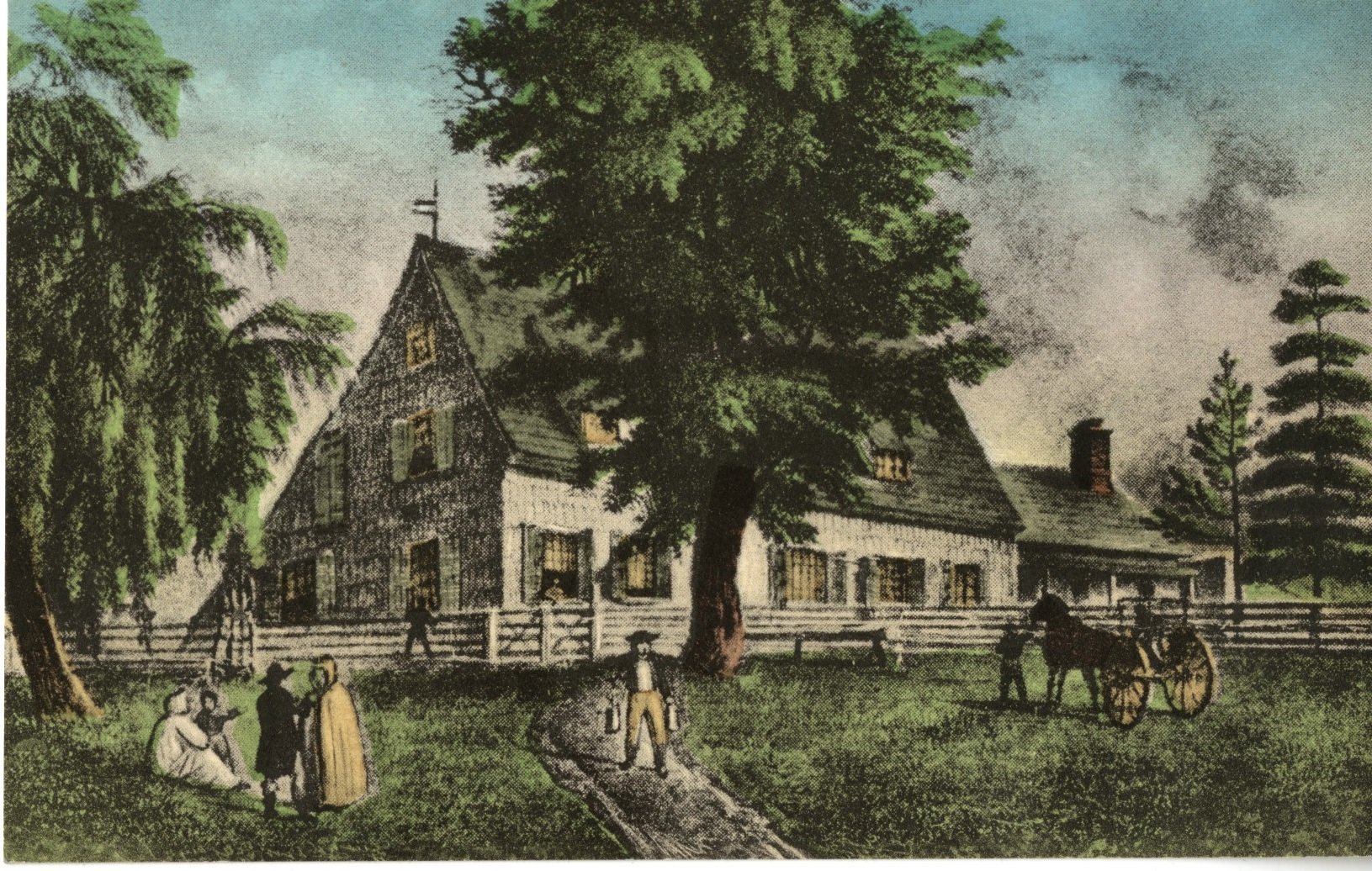THE GROWTH OF THE BOWNE ESTATE: 1653-1695
JOHN BOWNE: DEEDS AND INDENTURES
The deeds in our collection document the early growth of the Bowne estate via John Bowne’s land purchases in and around Flushing from 1653 to 1693. These conveyances mention the names of neighboring landowners, of local landmarks, and of previous owners of the property, painting a picture of the landscape and community relations across four decades. Moreover, these deeds may be the only original records of Flushing land transactions to survive from this period, as the town record office burned down in the eighteenth century. A handful of documents relate to other business affairs. One notable such item is Bowne’s contract with his indentured servant James Clement, who later became the Flushing town clerk and father of Samuel Clement, a noted Long Island furniture-maker.
An inventory of John Bowne’s deeds and indentures follows. Click the “View” button after each item to see the scanned image(s) and description of each document, with the option to download PDF copy and an annotated transcription of the text.
JOHN BOWNE (1627-1695): DEEDS OF LAND
BFP 2018.1.01-02: Deed, William Bromefield to John Bowne, 12 November 1653 [New Style] [1]
BFP 2018.1.01-03: Deed, Nicholas Pearsall to John Bowne, 29 January 1660 [New Style]
BFP 2018.1.01-04: Deed, William Lawrence to John Bowne, 3 March 1660 [New Style]
BFP 2018.1.01-05: Deed, John Storer to John Bowne, 15 March 1664/5 [Old Style] [2]
BFP 2018.1.01-06: Deed, John Feke [Feake] to John Bowne, 8 November 1665 [Old Style]
BFP 2018.1.01-07: Deed, John Firman to John Bowne, 1 January 1666/7 [Old Style]
BFP 2018.1.01-08: Deed of land, John Feke [Feake] to John Bowne, 10 March 1668/9 [Old Style]
BFP 2018.1.01-09: Deed of land, Sarah Feke [Feake] to John Bowne, 22 November 1669 [Old Style]
BFP 2018.1.01-10: Deed of land, John Hinchman to John Bowne, 12 May 1671 [Old Style]
BFP 2018.1.01-11: Deed of land, Benjamin Field to John Bowne, 22 March 1671/2 [Old Style]
BFP 2018.1.01-12 : Deed of land, John Adams to John Bowne, 20 September 1675 [Old Style]
BFP 2018.1.01-13: Retroactive Deed of Land to Robert Terry, deceased, from Richard Wilday [Wilde]; authorization from John Hinchman, Administrator of Estate, for sale to John Bowne, 21 September 1675 [Old Style]
BFP 2018.1.01-14: Deed, Edward Jessop to John Bowne, 15 February 1690/1 [Old Style]
BFP 2018.1.01-15: Deed, John Harrison to John Bowne, 7 December 1693 [Old Style]
OTHER INDENTURES
BFP 2018.1.01-16: Indenture of James Clement to John Bowne, 30 May 1663 [New Style]
BFP 2018.1.01-17: Power of Attorney - John Crook to John Bowne, Samuel Spicer, John Tilton, and William Richardson, Master of Ship Mayflower of Kent, 7 August 1675 [Old Style]
BFP 2018.1.01-17: Articles of Agreement - John Bowne, John Rodman, Samuel Palmer & Samuel Haight, executors for William Richardson, 15 July 1695 [Old Style]
RELATED DOCUMENTS
BFP 2018.1.01-01: Will of Thomas Bowne, 20 October 1675 [Old Style]
[1] Under the Dutch, official documents were dated in the New Style (using the modern calendar.)
[2] With the English takeover in 1664, dates reverted to the Old Style (Julian calendar) used by England until 1752, which began the year on March 25 and was 10 days behind the modern calendar throughout the 17th century.
FEATURED DOCUMENT:
Deed, Nicholas Pearsall to John Bowne
Nicholas Pearsall sells John Bowne a four-acre lot in Flushing formerly owned by a Mark Menlove. The property is bordered by the holdings of William Lawrence, a prominent land-owner, and William Hallett, the step-father of Bowne’s first wife, Hannah Feake and thus Bowne’s de facto father-in-law. Given the date, this may have been the home lot on which the Bowne House was built a year later. The deed was written and witnessed by Flushing town clerk Edward Hart, draughtsman of the Flushing Remonstrance. Those familiar with the latter document will recognize Hart’s distinctive handwriting.


